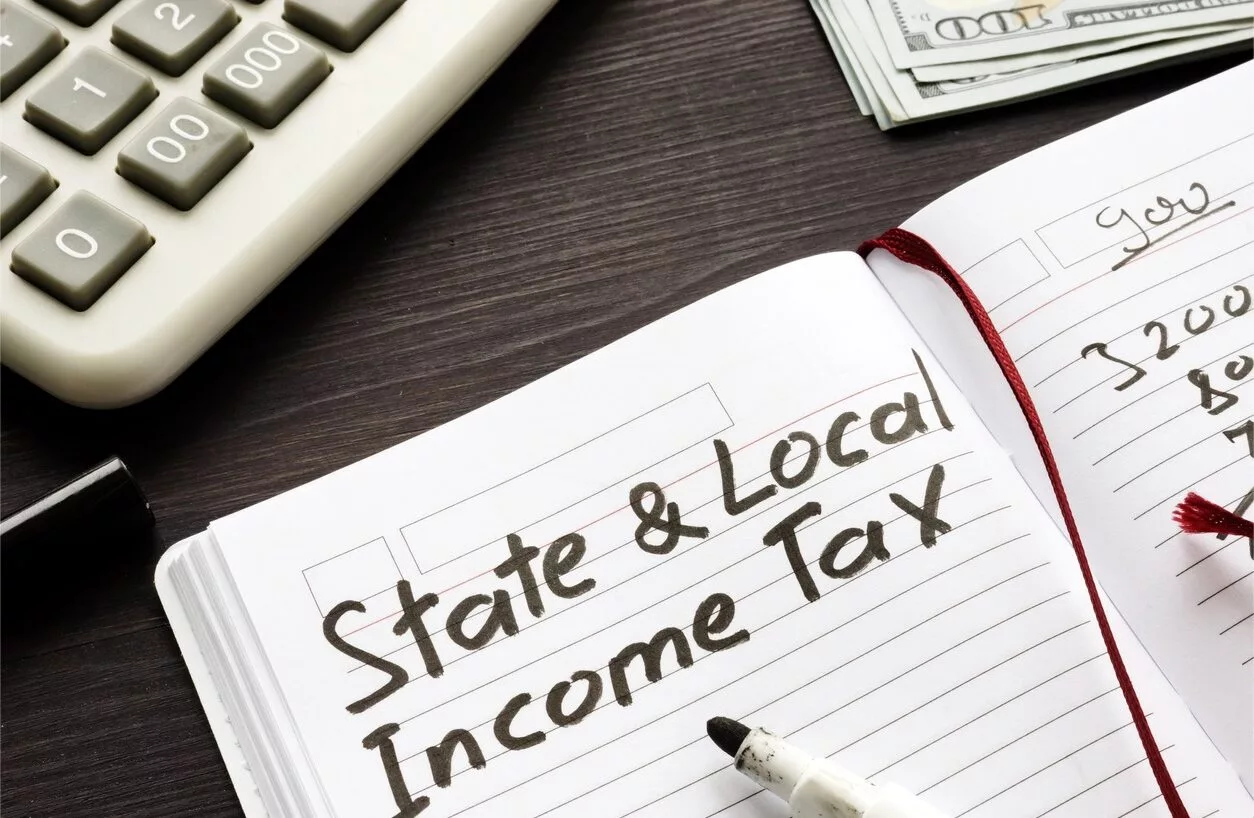
Few things raise Americans’ hackles like the idea of taxes. After working long hours at a job, payday finally comes, and you see the big difference between your gross pay — what you’ve earned — and your net pay — what you get to keep. This difference depends on how much money you make, tax credits from dependents, and other considerations, but one of the factors that people may overlook is the fact that tax rates vary across states. Most of the 50 states follow unique systems, and two states rarely line up exactly, so if you’re planning to move to a different state, it’s best to know what you might be moving into.
The Different State-Level Taxes
For most Americans, the individual income tax rate is what matters most. Nevertheless, that’s not the only thing that you should think about. Before making a decision, remember that there are four common ways a state will tax you.
| What It Taxes | Who Pays | |
|---|---|---|
| Income Tax | A percentage of the money earned as pay for work | Everyone who makes money above a certain threshold |
| Payroll/Business Tax | Money paid out to employees or received as self-employment | Businesses, entrepreneurs, and freelancers |
| Sales Tax | Business transactions between people or businesses | The seller, but usually the seller just charges the buyer |
| Miscellaneous | Capital gains, license fees, transit taxes, auto registration, etc. | Everyone (depending on activities) |
These are broad categories, and especially in the “miscellaneous” category, the impact can vary wildly depending on your work and lifestyle. Most people are primarily concerned with income and business taxes, but the other two can get to be a headache if state legislators get out of hand.
The Worst States for Income Tax
Across the states, there are three approaches to income tax: none, flat, and progressive. No income tax simply means that the state does not tax your income. This rate is obviously the most appealing for individuals, and states such as Alaska, Florida, and Nevada adopt this style. Flat taxes are those that do not change the tax rate depending on your income. Illinois, Kentucky, and North Carolina take this simplified approach. Progressive taxes increase in percentage depending on how much money you make. The majority of states take this approach, and there are several states that will take more than 10% of your income at the highest level on top of whatever the IRS is already taking from you.
| Tax Style | States |
|---|---|
| None | Alaska, Florida, Nevada, South Dakota, Texas, Washington, Wyoming |
| Flat | Colorado, Illinois, Indiana, Kentucky, Massachusetts, Michigan, New Hampshire, North Carolina, Pennsylvania, Tennessee, Utah, West Virginia, Wisconsin |
| Progressive | Alabama, Arizona, Arkansas, California, Connecticut, Delaware, DC, Georgia, Hawaii, Idaho, Iowa, Kansas, Louisiana, Maine, Maryland, Minnesota, Mississippi, Missouri, Montana, Nebraska, New Jersey, New Mexico, New York, North Dakota, Ohio, Oklahoma, Oregon, Rhode Island, South Carolina, Vermont, Virginia |
States with flat taxes tend to average around 4-5%, while those with progressive tax rates can be much higher. Among the top offenders for high-end progressive tax rates, you may want to think twice about moving to the following states:
- New Jersey starts out reasonably at 1.4% for low-income earners, but if you start to make more and more money, you’ll see up to 10.75% of your income go to Trenton.
- Hawaii shares NJ’s starting 1.4% tax rate but climbs even higher to 11% at the top of its progressive bracket.
- Minnesota has a lower ceiling of 9.85% at the top, but its starting tax rate of 5.35% may give pause to lower-class and middle-class earners.
- Despite California‘s attractive 1% lowest tax bracket, you want to think twice before moving there. Aside from a high cost of living, California boasts an impressive 13.3% maximum state income tax.
The Worst States for Business Taxes
Business taxes aren’t just for big corporations but also affect a significant cohort of Americans: freelancers and small business owners. For tax purposes, freelancers may be counted as businesses depending on how they manage their money. Small businesses, on the other hand, often have slim margins and have to take corporate taxes seriously. Here’s the list of states broken down by corporate tax style:
| Tax Style | States |
|---|---|
| None | Nevada, Ohio, South Dakota, Texas, Washington, Wyoming |
| Flat | Alabama, Arizona, California, Colorado, Connecticut, Delaware, DC, Florida, Georgia, Idaho, Illinois, Indiana, Massachusetts, Michigan, Minnesota, Montana, New Hampshire, New Jersey, New York, North Carolina, Oklahoma, Pennsylvania, Rhode Island, South Carolina, Tennessee, Utah, Virginia, West Virginia, Wisconsin |
| Progressive | Alaska, Arkansas, Hawaii, Iowa, Kansas, Kentucky, Louisiana, Maine, Mississippi, Nebraska, New Mexico, North Dakota, Oregon, Vermont |
Unlike individual income tax, many of these flat tax rates can approach 10% on business profits. It’s not too difficult for large corporations to move money in a way that avoids the worst of these taxes, so those who run small businesses must carefully consider where they will open shop. States with the highest corporate taxes are on a different list than those with high-income tax rates.
- Pennsylvania state legislators wanted to get every bit of tax possible without reaching 10%, so your business will pay 9.99% of its profits to Harrisburg each year.
- DC‘s government opted to be just slightly better than Pennsylvania, sneaking in at a 9.98% corporate tax rate.
- Iowa is the state with the highest possible corporate tax rate. Its progressive scale starts at 6%, but if your business has a successful year, you may see up to 12% of your profits paid to the state.
Other Taxes
Many people talk about states that don’t have a sales tax (which includes Alaska, Delaware, Montana, New Hampshire, and Oregon), but that’s not the full story. There are other taxes that vary depending on state and locality, such as those on gasoline, rentals, and real estate. When you’re deciding where to move for personal or business reasons, you should factor in all the taxes you’re likely to encounter. Does the state have a paid turnpike you’ll need to drive on? Does the state require hunting or fishing licenses? Those other costs can add up before you know it.
Summing It Up
For the full picture of tax burdens, these five states have some heavyweight combinations that may make it harder to make ends meet:
- New York – High-income taxes and expensive service rates make New York an expensive place to exist.
- Hawaii – This state passes the burden of its infrastructure costs to residents in the form of high taxes.
- Maine – Beautiful forests and high taxes make Maine a mixed bag for its residents.
- Vermont – This state double dips its property taxes, both at the state and local levels.
- Minnesota – The state’s coffers are well-filled with a budget surplus, but that comes at the expense of its taxpayers.
Every state has its pros and cons to living there, but if you see too much of your money disappearing in April each year, consider avoiding those five states.

